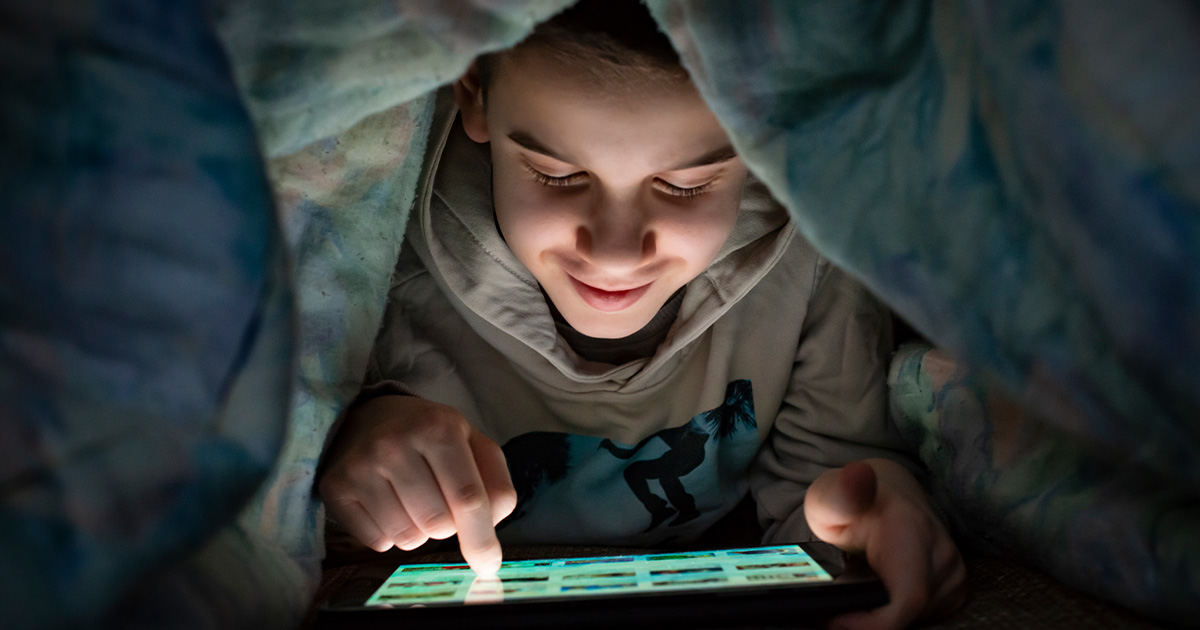

Does Virtual Reality Stunt Kids’ Development?
Is virtual reality harming the cognitive development of children?
03/14/22
John Stonestreet Kasey Leander

Earlier this year, Kelsey Ichikawa of Nautilus magazine raised an important question: Is virtual reality harming the cognitive development of children?
As they grow, kids rely on years of practice to develop basic levels of coordination. The process of “sensory integration,” where sight, balance, orientation, and touch are integrated into a seamless neurological experience is a “long and elaborate process of development,” writes Ichikawa, “that begins before birth and extends into early adulthood.”
One of the reasons young kids perform terribly in the virtual world is that they have yet to master those basic skills in the real world. This has led some experts to question if hours spent playing as an avatar could shortchange the process, leading to developmental issues later in life. So far, the jury is still out.
“When you enter the virtual world, the rules of sensory experience change, which could impact kids’ development,” says Swiss neuroscientist Jenifer Miehlbradt; “Maybe it’s totally safe, or maybe it’s not. Either way we need to know a lot more about what happens to them when they slip into avatar.”
Researchers won’t have to wait long for data. According to Bloomberg, more than two-thirds of all U.S. kids between the ages of 9 and 12 play “Roblox,” a massive, multiplayer online game that lends itself to VR. Immediately after going public, the game was valued at $41 billion, making it an overnight competitor with juggernauts like Nintendo and Electronic Arts. While you don’t have to use VR to play Roblox, millions do. Their experience could give researchers a baseline to test their theories, but with a painfully obvious catch. Any harm will have already been done.
As it develops at a breakneck pace, VR is already creating other ethical dilemmas. For example, despite developers’ best efforts, games like Roblox can fall victim to lewd or predatory content, as the BBC covered in February. As users upload content, a “small subset” find creative ways around built-in parental safety controls. It’s a problem as common as the internet, but with dramatically higher stakes.
VR is a powerful technology. University of Texas at Austin researcher Jakki Bailey found that immersive virtual reality far outpaces other digital media like TV or standard computers when it comes to creating a sense of “presence.” That’s exactly the purpose it was designed for. “It’s why even most adults have trouble stepping off a gangplank in immersive VR despite knowing that in reality, an office carpet lies just below,” writes Kelsey Ichikawa.
But like any technology, that immersive power should raise questions. Some are Class 1 questions or questions that come up when technology doesn’t work perfectly. What happens, for example, if VR safety protocols can’t filter out disturbing content?
But the more powerful dilemmas are Class 2 questions or “What happens if this technology does work perfectly?” What if we create such a seamless virtual experience that it’s indistinguishable from real life? What if we spend more time there than in real life? What if kids can instantly connect with anyone on the internet in a way that to them seems completely real?
For questions like these, simple answers aren’t enough. Christians need to think critically here because, like all technology, VR needs to be carefully stewarded.
On one hand, it has the potential for great good: medical applications, seamless business meetings, and just the fun of trying new things in virtual space. As God’s image bearers, we were designed to build, innovate, create, and explore. As we’ve said before on BreakPoint, “God is no Luddite.”
But we should also exercise caution. Our bodies aren’t an accidental part of who we are.
In an age that increasingly downplays physical aspects of reality, elevating our quasi-spiritual projects of self-creation, God’s view of our bodies is critical.
We live in the most interconnected age in human history, yet people are lonely. We’ve forgotten that sharing simple things such as food, hugs, eye contact, fellowship, and physical proximity are essential aspects of living life together as humans made in God’s image.
This especially matters for children, who are at risk of losing the normal interactions of life. Some have never experienced them in the first place. As early adopters, they may gain the most from our new technologies, but they also have the most to lose.
Have a Follow-up Question?
Related Content

© Copyright 2020, All Rights Reserved.














